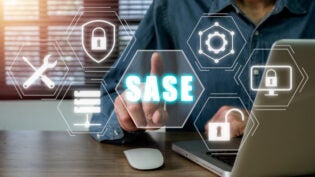
COVID-19 isn’t just a growing threat to public health – it’s also a growing threat to your company’s cybersecurity. From using scary subject lines to adopting fake official letterhead, cybercriminals are using the climate of fear caused by COVID-19 to their advantage.
These 10 tips will help keep your systems safe from cybercriminals trying to gain access to your data:
-
Lookout for generic content and greetings.
Watch out for general greetings like “Dear Valued Customer.” Cybercriminals will send emails in bulk, so non-personal greetings can be a HUGE red flag. Be careful not to click on any links in messages from people you don’t know. The link could take you to a fake website that asks for your private information, such as usernames and passwords, or it could download malware onto your computer. Even if the message is from someone you know, be cautious. Some viruses replicate and spread through email — so look for information that indicates that the message is legitimate.
-
Be wary of unexpected attachments.
Did you get an attachment from someone you weren’t expecting? Ensure users only open attachments from proven, trusted sources no matter how “official” that attachment looks. Attachments can hide “computer code” that can harm your system and lead to security breaches. If you’re questioning an attachment, email the source it’s from and ask what it is.
-
Keep an eye on the bad guys.
Monitor the Dark Web to watch for company data so a problem can be addressed before it becomes a crisis. 60% of SMBs go out of business within 6 months of a cyber incident! Dark Web Monitoring is an early warning system that can save you from a lot of risk.
-
Examine the entire “from” email address.
This one is tricky! The first part of the email address may be legitimate — but the last part might be off by letter or may include a number in the usual domain. It’s not unusual for an email address to be overlooked, so if you’re not expecting something from that person or business, always be cautious and think before you click.
-
Notice misspellings and/or incorrect grammar.
This might be a deliberate attempt to try to bypass spam filters. A lot of times, cybercriminals masking themselves as someone else will be off by one simple letter (example: Microsoft would be spelled Micrsoft.)
- Use two-factor authentication.
An extra layer of security always helps to keep passwords and data safe. Typically, you’ll be prompted to enter a random numeric code generated on your phone after entering your password. As a result, if anyone figures out your password, they can’t access your systems without the “extra” code.
-
Watch for urgent or demanding actions.
To increase the number of responses, people try to create a sense of urgency so that you immediately respond without thinking. Examples include “You’ve won! Click here to redeem prize,” or “We have your browser history pay now or we are telling your boss.” All it takes is one untrained employee being fooled by cybercriminals that will steal critical data or request a fraudulent payment that can crumble a business.
-
Protect your passwords.
Never use the same or similar passwords for every website and be sure to change your passwords regularly. Passwords should be alphanumeric and should also include special characters. Try using phrases instead of words — as it makes the password more complex. A password management application can also be used to keep your passwords secure, yet accessible. It is imperative to have a STRONG password!
-
Stay up to date on latest IT threats.
With new IT security threats emerging every day, it’s crucial to take action to protect your business from hackers and data breaches. You should always take the time to find and fix your weak points before cybercriminals have a chance to exploit them. Work with a responsive managed IT services provider to stay on top of today’s challenges! Awareness goes a long way to help protect your network.
-
Always ask for help.
Consult a security expert to plan effective strategies and get novel solutions.
COVID-19 continues to provide a target-rich environment for cybercriminals to launch phishing attacks and employ other dirty tricks to gain access to your data. It only takes a single employee opening a fake email, clicking on a risky link, or downloading a malware-loaded attachment for them to succeed. Protect your business by constructing a cybersecurity plan today!












